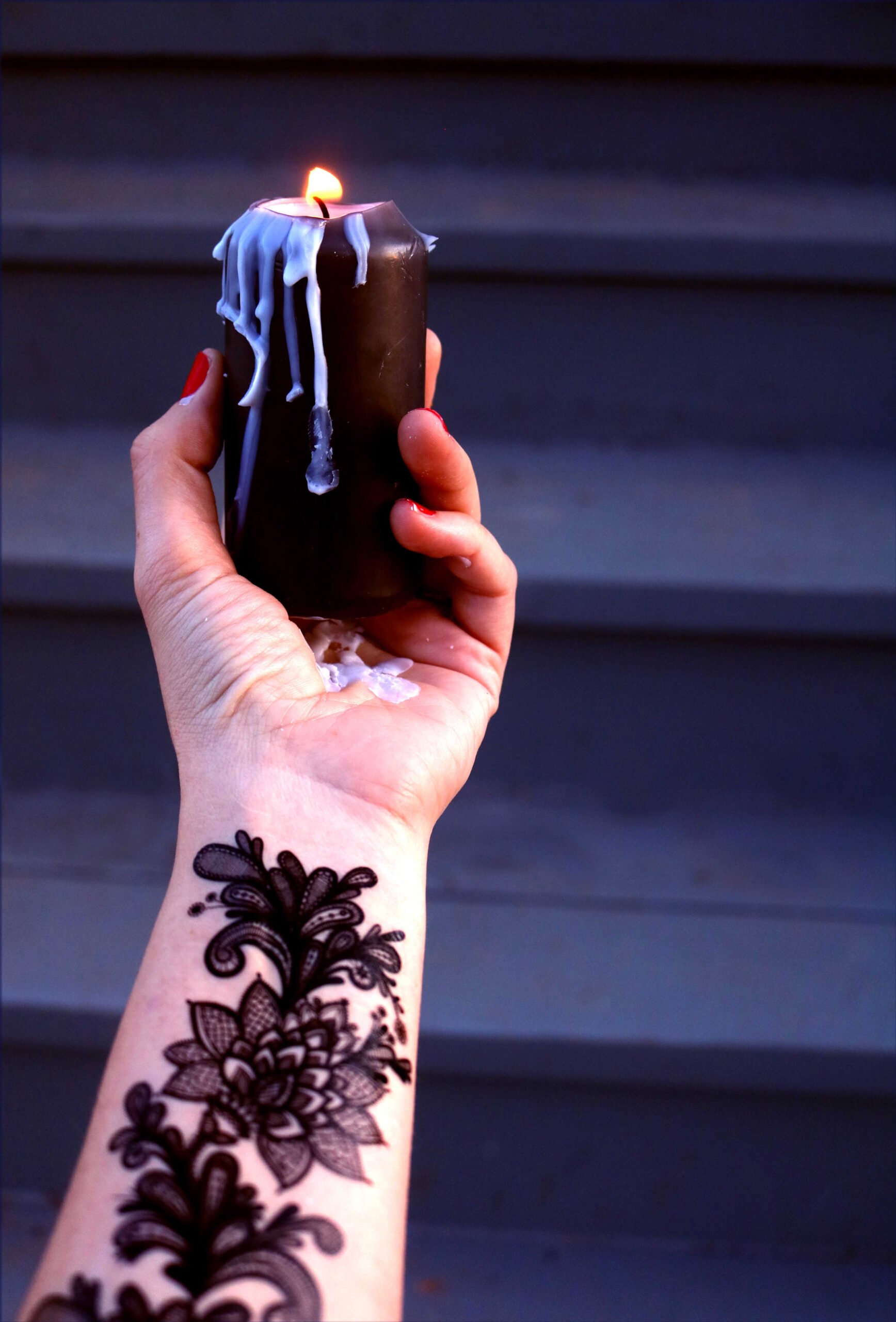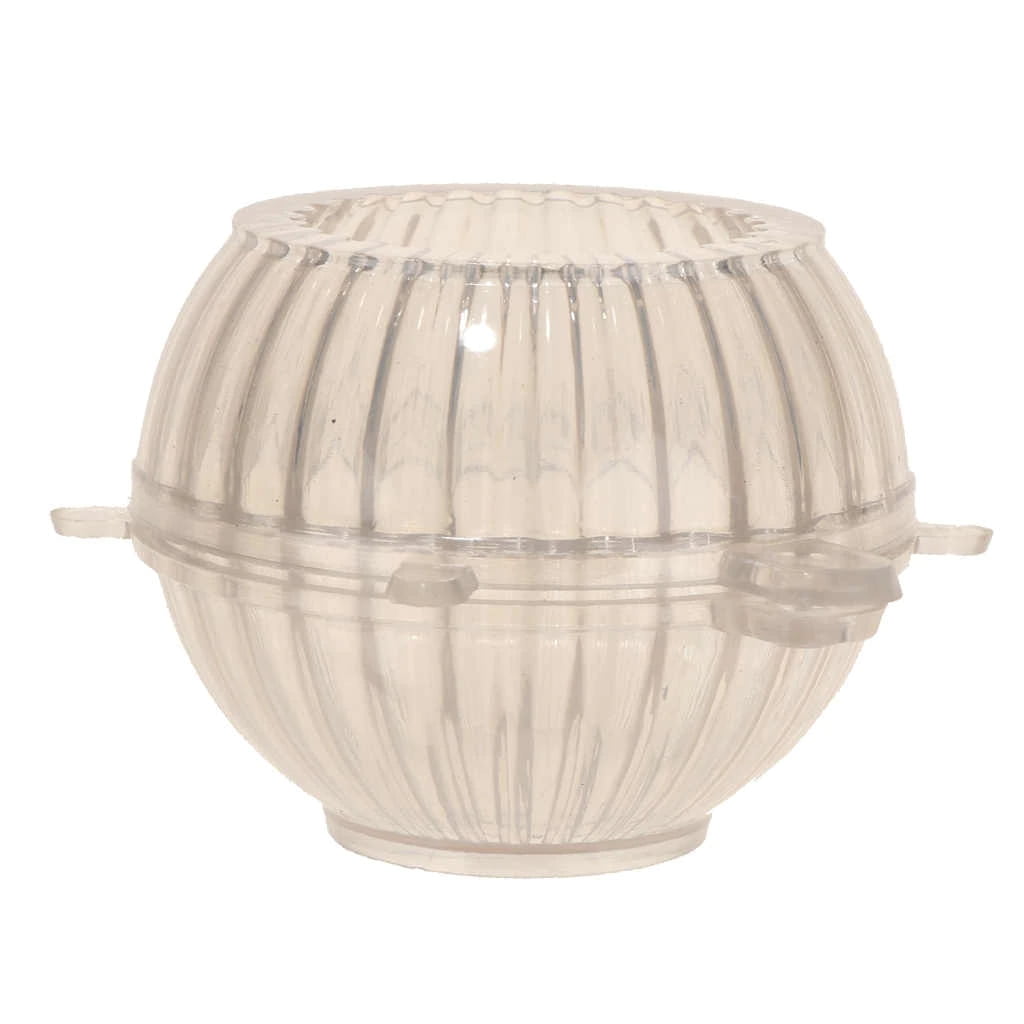When it comes to making candles, understanding the concept of flashpoint is crucial. Flashpoint refers to the temperature at which a substance, such as a fragrance oil or wax, can ignite when exposed to an open flame or spark. In candle making, knowing the flashpoint of your ingredients is essential for several reasons.
In this article, we will delve into the significance of flashpoint in the candle making process. We will explore how flashpoint impacts scent throw in fragrance oils and how it determines fire hazards and safety measures. Additionally, we will discuss the science behind flashpoint, differentiate it from other candle making considerations, and navigate through industry standards and regulations.
As a candle maker, being knowledgeable about flashpoint allows you to choose the right fragrance oils based on desired flashpoints for optimal performance. Furthermore, understanding how to test and determine the flashpoints of your ingredients ensures that you can create candles that are both aesthetically pleasing and safe to use.
With a comprehensive understanding of flashpoint and its implications in candle making, you can master this important aspect of the craft and achieve exceptional success in creating high-quality candles that not only look beautiful but also burn safely. So let’s dive into the world of flashpoint and unlock its secrets for creating exceptional candles.
The Basics
When it comes to candle making, understanding the concept of flashpoint is essential. The flashpoint of a substance refers to the lowest temperature at which its vapors can form an ignitable mixture with air. In simpler terms, it is the temperature at which a fragrance oil or other candle ingredient can catch fire when exposed to an open flame or spark.
The significance of flashpoint in the candle making process cannot be overstated. It plays a crucial role in determining both the scent throw and safety of a candle. For fragrance oils, the flashpoint directly impacts how well the scent is released when the candle is burned.
Oils with higher flashpoints tend to have a stronger scent throw, as they evaporate at a slower rate during combustion. On the other hand, candles made with fragrance oils that have low flashpoints may not produce as noticeable of a scent.
Safety is another key consideration when it comes to flashpoint in candle making. If candles are made with ingredients that have low flashpoints and are subjected to heat sources beyond their flashpoints, they can pose fire hazards.
This is particularly important for containers or vessels that do not provide adequate ventilation for heat dissipation. By understanding and working with appropriate flashpoints for each ingredient used, candle makers can ensure that their products are safe for use and minimize the risk of accidents.
To incorporate this information into your article, you can use an unordered list like this:
- The flashpoint of a substance is the lowest temperature at which its vapors can form an ignitable mixture with air.
- Understanding flashpoint is crucial in determining both scent throw and safety in candles.
- For fragrance oils, high flashpoints result in stronger scent throws, while low flashpoints may produce less noticeable scents.
- Candles made with ingredients that have low flashpoints can pose fire hazards if exposed to heat sources beyond their flashpoints.
- By working with appropriate flashpoints, candle makers can ensure the safety of their products and minimize accidents.
The Role of Flashpoint in Fragrance Oils
Fragrance oils play a crucial role in candle making, as they determine the scent throw or the strength of the fragrance when the candle is burned. Flashpoint, an essential characteristic of fragrance oils, directly impacts the scent throw of candles. Understanding how flashpoint affects fragrance oils is therefore vital for candle makers to achieve their desired results.
Flashpoint refers to the temperature at which a fragrance oil evaporates and ignites when exposed to an open flame or heat source. This characteristic is significant because it influences how quickly and effectively the scent is released when a candle is lit.
Fragrance oils with low flashpoints tend to evaporate more rapidly, resulting in a stronger initial scent throw but potentially decreasing over time. On the other hand, fragrance oils with high flashpoints release their aroma gradually and can maintain a steady scent throughout burning.
To illustrate this effect, consider two fragrance oils: one with a low flashpoint of 125°F (51.7°C) and another with a high flashpoint of 200°F (93.3°C). When candles made with these fragrance oils are burned, the one with the low flashpoint will emit a potent aroma initially but may fade quickly.
In contrast, the candle using the high-flashpoint fragrance oil will give off a milder scent at first but will continue to release its fragrance for a longer duration.
To determine which flashpoint range is suitable for their desired scent throw, candle makers should consider various factors such as room size and personal preference. For example, smaller rooms may benefit from lower-flashpoint fragrances that create an intense aroma in a confined space. Conversely, larger rooms or open spaces may require higher-flashpoint fragrances to ensure a consistent and noticeable scent throw.
Safety First
Flashpoint is a crucial factor to consider in candle making, as it determines the potential fire hazards associated with a particular fragrance oil. The flashpoint of an oil refers to the lowest temperature at which it can release enough vapor to ignite when exposed to an open flame or spark. Understanding the flashpoint of fragrance oils is essential for ensuring the safety of both the candle maker and the end user.
When selecting fragrance oils for candle making, it is crucial to choose ones with a flashpoint higher than the maximum temperature at which you plan to burn your candles. If a fragrance oil has a flashpoint below the burning temperature, there is a risk of the oil vaporizing and igniting while the candle is lit, leading to a potential fire hazard.
Therefore, knowing and adhering to the flashpoints of your chosen fragrance oils can help prevent accidents and promote safe candle making practices.
To ensure safety during candle making, there are several measures that can be taken related to flashpoint. It is important to work in a well-ventilated area and keep flammable materials away from open flames or heat sources. Additionally, proper storage of fragrance oils is essential, as they should be kept in cool areas away from direct sunlight or any other heat sources that could potentially increase their temperature above their flashpoints.
| Fragrance Oil | Flashpoint (°F) |
|---|---|
| Lavender | 140 |
| Vanilla | 200 |
| Citrus Burst | 120 |
By referring to a table like this, candle makers can easily compare the flashpoints of different fragrance oils and choose those that align with their desired safety measures. This data serves as a valuable reference point for making informed decisions when it comes to fire hazards and safety precautions in candle making.
The Science Behind Flashpoint
Flashpoint is a crucial concept in candle making that involves the understanding of the chemistry and physics behind it. To gain a deeper knowledge and appreciation of flashpoint, it is important to explore the factors that contribute to its occurrence.
Flashpoint refers to the temperature at which a substance produces enough vapor to ignite when exposed to an open flame or spark. In candle making, this means that if the wax in a candle reaches its flashpoint temperature, it can potentially catch fire. Understanding the chemistry behind flashpoint involves recognizing the relationship between vapor pressure, volatility, and ignition.
Vapor pressure plays a significant role in determining flashpoint. Vapor pressure refers to the force exerted by a liquid’s molecules as they evaporate into gas form. Substances with higher vapor pressures generally have lower flashpoints because they evaporate more easily, producing vapors that are more likely to ignite when exposed to heat or an open flame.
Volatility is another factor that influences flashpoint. Volatile substances have a high tendency to vaporize quickly at normal temperatures and atmospheric pressure. Therefore, volatile fragrance oils or other additives used in candle making may significantly affect the flashpoint of a candle. It is crucial for candle makers to carefully consider the volatility of their chosen ingredients to ensure safe handling and optimum performance.
Understanding the science behind flashpoint allows candle makers to make informed decisions about their materials and processes. By having knowledge about how flashpoints are determined by vapor pressure and volatility, they can select ingredients that will result in safer candles with desirable fragrance throw. Additionally, understanding these scientific principles helps facilitate proper safety measures during production and handling, ensuring both product quality and consumer satisfaction.
| Chemistry Factors | Impact on Flashpoint |
|---|---|
| Vapor Pressure | Higher vapor pressure leads to lower flashpoint |
| Volatility | Higher volatility contributes to lower flashpoint |
Differentiating Flashpoint from Other Candle Making Considerations
When it comes to candle making, there are various factors to consider beyond just the flashpoint. While flashpoint plays a crucial role in determining the safety and performance of a candle, it is important to differentiate it from other considerations such as heat resistance and melting point. Understanding the distinctions between these factors can help candle makers create high-quality candles that meet their desired specifications.
Heat Resistance
Heat resistance refers to a material’s ability to withstand elevated temperatures without deforming or breaking down. In candle making, heat resistance is particularly important for ensuring the structural integrity of the container or candle holder. While flashpoint mainly focuses on the volatility of fragrance oils and their potential fire hazards, heat resistance considers the physical characteristics of materials used in making candles.
When selecting materials for candle containers or holders, it is essential to choose options that can withstand the heat generated by a burning candle. Materials such as glass, ceramic, and certain metals like stainless steel are commonly used for their heat-resistant properties. Using heat-resistant materials not only ensures the safety of your candles but also prevents any potential accidents caused by overheating or container failure.
Melting Point
While both melting point and flashpoint involve temperature considerations, they serve different purposes in the candle making process. Melting point refers to the temperature at which a solid wax substance transforms into liquid form. It determines how easily a wax can be melted and poured into molds or containers.
Different waxes have different melting points, which can affect their ease of use and application in candle making. For example, soy wax typically has a lower melting point compared to beeswax or paraffin wax. Candle makers need to carefully consider the melting point of their chosen wax to ensure proper handling and pouring during the manufacturing process.
It is important to note that while flashpoint is primarily concerned with fragrance oils’ combustion properties, it does not directly impact the melting point of waxes. However, it is crucial to consider the flashpoint of fragrance oils used in combination with melting point to ensure that the resulting candle is both safe and easy to work with.
Navigating Flashpoint Guidelines
When it comes to candle making, understanding flashpoint guidelines is crucial in ensuring both the quality and safety of your candles. Flashpoint refers to the temperature at which a fragrance or essential oil can ignite when exposed to an open flame or spark. Candle makers must be aware of industry standards and regulations surrounding flashpoints to ensure that their products meet the required safety measures.
Industry standards dictate that the flashpoint of fragrance oils used in candle making must typically exceed 140 degrees Fahrenheit (60 degrees Celsius). This requirement is set in place to minimize fire hazards associated with candles. Candle makers are responsible for following these guidelines and selecting fragrance oils that meet or exceed this minimum flashpoint requirement.
Regulations also exist regarding labeling and packaging of candles based on their flashpoints. As a candle maker, it is important to accurately label your products with the appropriate flashpoints as stated by regulatory bodies. This enables consumers to make informed choices about product handling and usage. Additionally, when shipping candles, transport regulations may apply depending on the flashpoint of the products being shipped.
To ensure compliance with these industry standards and regulations, candle makers should always consult reliable sources for information on specific flashpoints. Suppliers of fragrance oils often provide necessary documentation or labels indicating flashpoints, allowing candle makers to ensure they are using safe ingredients.
Choosing the Right Fragrance Oils
When it comes to choosing fragrance oils for candle making, the desired flashpoint plays a crucial role. The flashpoint of a fragrance oil is the temperature at which it can combust when exposed to an open flame or spark. It is important to consider the flashpoint of fragrance oils because it ultimately determines the safety and performance of your candles.
Factors to Consider
There are several factors that should be taken into consideration when selecting fragrance oils based on their desired flashpoint. One important factor is the type of wax that you are using. Different types of wax have different melting points, and therefore require fragrance oils with specific flashpoints. For example, if you are using soy wax, which has a lower melting point, you would want to choose fragrance oils with a lower flashpoint to ensure proper burning and scent throw.
Another factor to consider is the specific scent profile you are aiming for in your candles. Some fragrances have higher flashpoints due to their composition, while others may have lower flashpoints. This means that certain scents may require additional safety precautions or adjustments in your candle making process.
Lastly, it is important to consider any regulations or guidelines set by industry standards when choosing fragrance oils based on their desired flashpoints. These regulations are put in place to ensure consumer safety and prevent any potential fire hazards associated with candles.
Flashpoint Testing
To determine the flashpoint of fragrance oils, it is necessary to conduct testing using industry-approved methods and techniques. There are different methods available, including the Pensky-Martens Closed Cup (PMCC) method and the Tagliabue Open Cup (TOC) method, among others.
During flashpoint testing, small samples of the fragrance oil are gradually heated until a flame ignites when brought near the surface of the liquid. The temperature at which this occurs is recorded as the flashpoint.
It is important for candle makers to conduct flashpoint testing with each fragrance oil they use to ensure accurate and safe usage. Testing can also help identify any potential issues or adjustments that need to be made in the candle making process to achieve optimal performance.
Flashpoint Testing
One crucial aspect of candle making is determining the flashpoint of candle ingredients. The flashpoint is the temperature at which a substance gives off enough vapor to ignite when exposed to an open flame or heat source. It is essential for candle makers to know the flashpoint of their fragrance oils, waxes, and other ingredients to ensure safe handling and usage. In this section, we will explore the various methods and techniques used in flashpoint testing.
There are several methods that candle makers can use to determine the flashpoint of their candle ingredients. One common method is the Cleveland Open Cup (COC) method. This method involves heating a small sample of the ingredient in an open cup apparatus until it reaches its ignition temperature. An open flame passes over the surface of the sample, causing it to ignite momentarily. The temperature at which this ignition occurs is recorded as the flashpoint.
Another widely used technique for flashpoint testing is the Tag Closed Cup (TCC) method. In this method, a tagliabue closed cup apparatus is utilized. The sample is enclosed in a partially closed container, heated gradually while periodically exposing it to an open flame or spark until it ignites. Similar to COC, the temperature at which ignition happens is considered as the flashpoint.
It’s important for candle makers to follow proper safety protocols during flashpoint testing as working with flammable substances can be hazardous. Working in a well-ventilated area away from any sources of ignition such as flames or sparks is crucial. Additionally, using appropriate protective equipment like gloves and goggles should be considered when handling potentially volatile substances.
By employing these methods and adhering to safety precautions during flashpoint testing, candle makers can gain valuable insights into their ingredients’ behavior when exposed to heat or flame sources. Understanding the flashpoints of different components allows them to make informed decisions about formulation and ensure the safety of their products.
Conclusion
In conclusion, understanding and mastering flashpoint is essential for achieving exceptional candle making success. The flashpoint of fragrance oils plays a crucial role in the scent throw of candles, allowing for a well-balanced and long-lasting fragrance experience. Furthermore, being aware of the flashpoint helps prevent fire hazards and ensures the safety of both makers and users.
By delving into the science behind flashpoint, candle makers can gain a deeper understanding of the chemistry and physics involved in the process. This knowledge can guide them in differentiating flashpoint from other considerations such as heat resistance and melting point. It is important to note that while these factors are related, they each have unique effects on the overall performance of candles.
Navigating flashpoint guidelines and adhering to industry standards and regulations is vital for candle makers. By following recommended practices, they can ensure that their products meet the highest quality and safety standards. Additionally, choosing fragrance oils with appropriate flashpoints based on desired outcomes is crucial. Considering factors such as burn time, scent throw, and compatibility with other ingredients can help candle makers achieve the desired results.
To determine the flashpoint of candle ingredients accurately, various testing methods and techniques exist. Conducting these tests enables candle makers to make informed decisions about ingredient compatibility and formulation adjustments if necessary.
Overall, mastering flashpoint is an essential skill for successful candle making. By understanding its importance in terms of scent throw, safety measures, chemistry, differentiation from other considerations, guidelines adherence, fragrance oil selection, and testing methods-the path to creating exceptional candles becomes clear. With knowledge and expertise in handling flashpoints correctly, candle makers can craft high-quality products that delight customers while prioritizing safety.
Frequently Asked Questions
What is the best flash point for candles?
The flash point of a candle refers to the minimum temperature at which its vapor can ignite in the presence of an open flame or spark. The best flash point for candles depends on several factors, including the type of wax used and any fragrance oils added. Generally, it is recommended to choose waxes with a higher flash point to ensure safety during burning.
A common flash point range for traditional paraffin wax candles is around 130-150 degrees Fahrenheit (54-66 degrees Celsius). This allows the candle to burn steadily and melt evenly without posing unnecessary fire hazards.
What is the flash point of wax?
The flash point of wax can vary depending on its composition. Different types of waxes, such as paraffin, beeswax, or soy wax, have different flash points due to their distinct chemical properties.
For example, paraffin wax typically has a flash point between 370-482 degrees Fahrenheit (188-250 degrees Celsius), while beeswax usually has a higher flash point ranging from 392-572 degrees Fahrenheit (200-300 degrees Celsius). Flash point information can be helpful for manufacturers and consumers alike to understand how safely and effectively candles made from specific waxes will perform.
What is the flashpoint of soy wax?
The flashpoint of soy wax is usually considered to be relatively low compared to other types of waxes commonly used in candle-making. The exact flash point may vary depending on the specific formulation and additives used by different soy wax manufacturers, but it generally falls within the range of 110-150 degrees Fahrenheit (43-66 degrees Celsius).
This makes soy wax candles more susceptible to melting or even igniting in hotter environments or when exposed to direct heat sources for prolonged periods. It’s important for those working with soy wax candles to handle and burn them with caution, ensuring they are placed in suitable containers or holders that can handle the heat generated during burning.

Welcome to my candle making blog! In this blog, I will be sharing my tips and tricks for making candles. I will also be sharing some of my favorite recipes.





